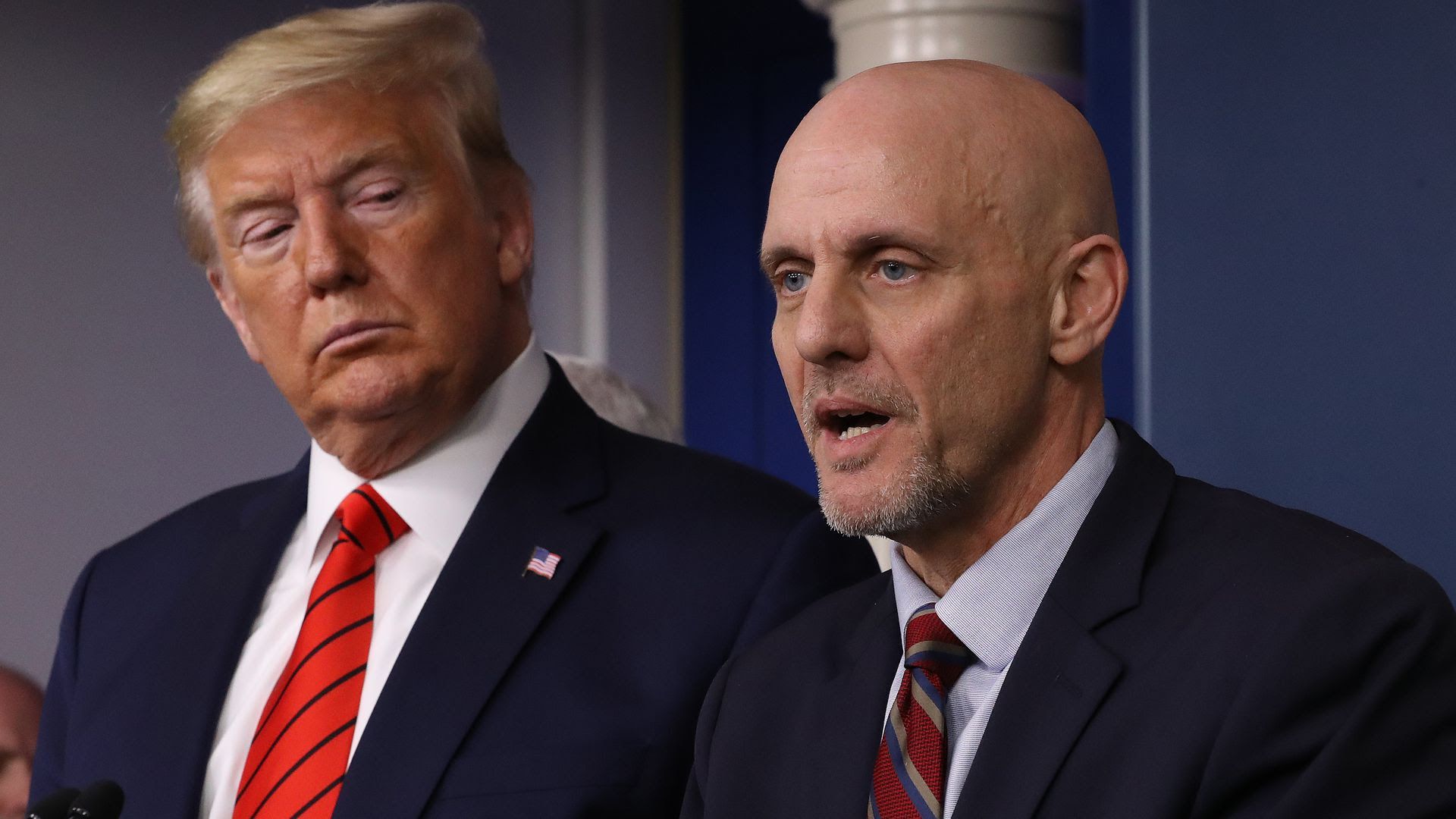Positive FDA Signals Under Trump Administration For Biotech Sector

Table of Contents
Accelerated Drug Approvals and Streamlined Processes
One of the most noticeable positive signals from the FDA under the Trump administration was the acceleration of drug approvals and the streamlining of regulatory processes. This led to faster patient access to potentially life-saving medications, but also sparked debates regarding the balance between speed and safety.
21st Century Cures Act
The 21st Century Cures Act played a pivotal role in expediting the drug approval process. This legislation, signed into law in 2016, aimed to modernize the FDA and accelerate the development and approval of new medical products.
- Examples of drugs approved under accelerated pathways: Several oncology drugs and breakthrough therapies for rare diseases benefited from the expedited review processes introduced by the Cures Act. These faster approvals significantly reduced the time between drug discovery and patient access.
- Impact on patient access to innovative treatments: The accelerated approvals undoubtedly led to earlier access to potentially life-saving treatments for patients suffering from serious illnesses. This was a significant win for patient advocacy groups who had long pushed for faster drug approvals.
- Critiques of the accelerated approval process: Concerns were raised about the potential for increased risk due to less stringent review standards under accelerated pathways. Critics argued that the focus on speed could compromise the thorough assessment of long-term safety and efficacy.
Increased FDA Transparency and Communication
Improved communication and transparency between the FDA and biotech companies contributed to smoother processes and reduced delays. Clearer guidelines and more proactive engagement helped companies navigate the regulatory landscape more efficiently.
- Examples of enhanced communication strategies: The FDA implemented new communication strategies, including more frequent meetings and the publication of clear guidance documents. This facilitated better understanding of regulatory expectations and reduced ambiguity.
- Reduction in approval delays due to better clarity on regulatory requirements: The enhanced communication resulted in fewer delays caused by misunderstandings or unforeseen regulatory hurdles. This contributed to faster approvals and improved efficiency throughout the drug development pipeline.
Focus on Breakthrough Therapies and Orphan Drugs
The Trump administration placed a strong emphasis on developing treatments for rare diseases and life-threatening conditions. This focus on breakthrough therapies and orphan drugs stimulated significant investment and innovation in these critical areas.
Incentives for Orphan Drug Development
Significant financial and regulatory incentives were offered to encourage innovation in orphan drug development. This helped attract investment and resources to areas where development had previously been hampered by economic challenges.
- Tax credits and other financial benefits: The government offered various tax credits and other financial incentives to companies developing orphan drugs. This made such ventures more economically viable.
- Expedited review processes for orphan drugs: Orphan drugs, designed for rare diseases affecting small patient populations, were prioritized for expedited review. This further incentivized their development.
- Impact on the availability of treatments for rare diseases: The increased focus and incentives resulted in a notable increase in the number of approved treatments for rare diseases, dramatically improving the lives of many patients.
Investment in Biomedical Research and Development
The positive FDA signals under the Trump administration stimulated increased investment in biomedical research and development. Both public and private sectors significantly increased their funding.
- Government funding initiatives: The administration increased funding for various research initiatives, including those focused on cancer research, Alzheimer's disease, and other critical areas.
- Private sector investment spurred by positive FDA signals: Positive signals from the FDA encouraged private sector investment, boosting the development pipeline and fostering innovation.
- Impact on the pipeline of new therapies: The increased investment has significantly expanded the pipeline of new therapies under development, promising a brighter future for patients with various life-threatening conditions.
Regulatory Reforms and Reduced Barriers to Entry
The Trump administration also implemented regulatory reforms designed to reduce barriers to entry for biotech companies, particularly smaller firms. This fostered competition and encouraged innovation.
Reduced Regulatory Burden
Specific regulatory changes lessened the burden on smaller biotech firms, enabling them to compete more effectively with larger pharmaceutical companies.
- Examples of streamlined regulations: The FDA streamlined various regulatory processes, reducing paperwork and simplifying compliance requirements.
- Reduction in paperwork and administrative hurdles: The reduction in administrative burdens significantly reduced the cost and time involved in bringing new drugs to market.
- Impact on smaller biotech companies' ability to compete: These reforms leveled the playing field, allowing smaller biotech companies to participate more actively in the development and commercialization of new drugs.
Increased Collaboration Between the FDA and Industry
Improved collaboration between the FDA and the biotech industry led to more efficient regulatory processes and a better understanding of regulatory expectations.
- Examples of successful collaborations: The FDA engaged in several successful collaborations with biotech companies, facilitating a more proactive and responsive regulatory environment.
- Increased use of advisory committees: The FDA made greater use of advisory committees, fostering open dialogue and enabling better-informed decision-making.
- Impact on the overall efficiency of the approval process: The improved collaboration significantly increased the efficiency of the drug approval process, contributing to faster patient access to new treatments.
Conclusion
The Trump administration's policies toward the FDA generated a wave of positive signals for the biotech sector. Accelerated approvals, increased transparency, a focus on breakthrough therapies, and regulatory reforms all contributed to a more favorable environment for innovation and investment. While debates continue about the long-term consequences of these policies, the positive FDA signals under the Trump administration undeniably influenced the trajectory of the biotech sector. Understanding these signals is crucial for navigating the evolving regulatory landscape and maximizing opportunities in the biotech industry. Further research into the specific impacts of these policies is encouraged to fully grasp their long-term effects on the biotech sector.

Featured Posts
-
 Noviy Merch Ot Pavla Pivovarova S Izobrazheniem Aleksandra Ovechkina
Apr 23, 2025
Noviy Merch Ot Pavla Pivovarova S Izobrazheniem Aleksandra Ovechkina
Apr 23, 2025 -
 Ankara Da 10 Mart 2025 Pazartesi Iftar Ve Sahur Vakitleri
Apr 23, 2025
Ankara Da 10 Mart 2025 Pazartesi Iftar Ve Sahur Vakitleri
Apr 23, 2025 -
 Detroit Tigers Series Loss To Brewers A Detailed Analysis Of The 1 5 Defeat
Apr 23, 2025
Detroit Tigers Series Loss To Brewers A Detailed Analysis Of The 1 5 Defeat
Apr 23, 2025 -
 Private Credit Investments Now Available To Retail Investors Through Invesco And Barings
Apr 23, 2025
Private Credit Investments Now Available To Retail Investors Through Invesco And Barings
Apr 23, 2025 -
 Cele Mai Bune Rate Ale Dobanzilor La Depozite Bancare In Martie
Apr 23, 2025
Cele Mai Bune Rate Ale Dobanzilor La Depozite Bancare In Martie
Apr 23, 2025
